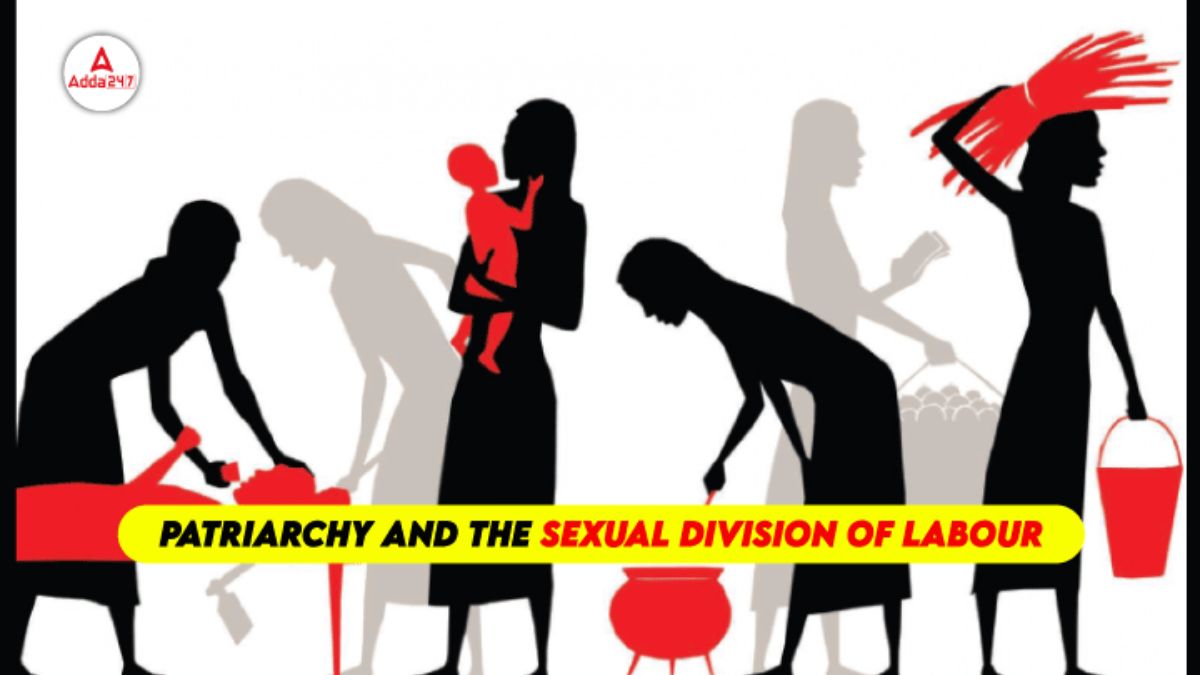Table of Contents
Patriarchy and the sexual division of labor are deeply ingrained societal constructs that have shaped gender roles and expectations across cultures and societies. These constructs affect social dynamics and influence legal systems, particularly labour laws. This article explores the intersection of patriarchy and the sexual division of labour from a legal perspective, examining how these concepts have influenced judicial interpretation and the development of labour laws, and how legal reforms are addressing gender justice.
What is Patriarchy?
Patriarchy refers to a social system in which men hold predominant power and authority over women and other genders, both in public and private spheres. Historically, patriarchal systems have been characterized by male dominance in political, economic, and social institutions, leading to the marginalization and subordination of women. This system is perpetuated through cultural norms, religious practices, and legal frameworks that reinforce male authority and privilege.
What is Sexual Division of Labour?
The sexual division of labour refers to allocating different tasks and responsibilities based on gender. Traditionally, men have been associated with paid work outside the home, while women have been relegated to unpaid domestic work and caregiving roles. This division is not based on inherent biological differences but on socially constructed gender norms. The sexual division of labour reinforces gender stereotypes and contributes to the economic and social inequality of women.
Patriarchy and Gender Justice: A Legal Perspective
Patriarchy has significantly influenced the development of laws, particularly those related to labour and employment. Historically, labour laws were designed with the assumption that men were the primary breadwinners, while women were responsible for domestic duties. This assumption has led to the marginalization of women in the workforce and the undervaluation of their contributions, both in paid and unpaid work.
Gender justice in the legal realm seeks to challenge and dismantle these patriarchal structures. Legal reforms aimed at promoting gender equality have increasingly focused on ensuring equal opportunities for women in the workplace and recognizing the value of unpaid domestic work.
Role of Patriarchy in Shaping Labour Laws
Patriarchy has played a critical role in shaping labour laws, often leading to discriminatory practices that disadvantage women. For instance, “protective legislation” for women, such as restrictions on night work or certain types of employment, was originally intended to safeguard women’s health. However, such laws also perpetuated the notion that women were weaker and less capable than men, thereby limiting their employment opportunities.
Legal Implications of Sexual Division of Labour
The sexual division of labour has far-reaching legal implications, particularly in terms of gender discrimination in the workforce. Women often face systemic barriers to entering and advancing in certain professions, resulting in a gender wage gap and occupational segregation. Furthermore, the lack of legal recognition for unpaid domestic work perpetuates economic inequality between men and women.
Gender Discrimination in Workforce: Judicial Precedents
Several landmark judicial decisions have addressed gender discrimination in the workforce, highlighting the ongoing struggle for gender justice. In the case of Vishaka v. State of Rajasthan (1997), the Supreme Court of India established guidelines for preventing sexual harassment at the workplace, recognizing the need to protect women’s rights in a patriarchal society. Similarly, in Air India v. Nargesh Meerza (1981), the Supreme Court struck down discriminatory service conditions that forced female employees to resign upon marriage or pregnancy, emphasizing the need for gender equality in employment.
Patriarchal Influence on Labour Laws: Key Case Studies
Case studies such as R.D. Upadhyay v. State of Andhra Pradesh (2006) demonstrate how patriarchal attitudes have influenced labour laws and policies. This case dealt with the conditions of women in prisons, including their right to work and access to facilities, reflecting the broader issues of gender discrimination and the sexual division of labour within institutional settings.
Legal Reforms Addressing Patriarchy and Gender Equality
Legal reforms aimed at addressing patriarchy and promoting gender equality have focused on issues such as equal pay, maternity benefits, and anti-discrimination laws. The introduction of the Equal Remuneration Act, 1976 in India, for example, sought to address the gender wage gap by ensuring equal pay for equal work, regardless of gender. Similarly, the Maternity Benefit (Amendment) Act, 2017 extended maternity leave and introduced provisions for crèche facilities, recognizing the dual burden of paid and unpaid work carried by women.
Landmark judgments such as Secretary, Ministry of Defence v. Babita Puniya (2020) have challenged traditional gender roles and the sexual division of labour. In this case, the Supreme Court granted permanent commission to women in the Indian Army, rejecting the argument that women were unsuitable for command roles due to their gender. This judgment marks a significant step towards dismantling the sexual division of labour in traditionally male-dominated fields.
How Patriarchy Impacts Judicial Interpretation of Labour Rights
Patriarchy continues to impact the judicial interpretation of labour rights, with Courts often grappling with deeply entrenched gender norms. However, progressive judgments are gradually challenging these norms, paving the way for more equitable legal frameworks. For instance, the National Legal Services Authority v. Union of India (2014) judgment, which recognized the rights of transgender individuals, is a step towards acknowledging the diverse experiences of gender and challenging patriarchal structures within the legal system.
Conclusion
Patriarchy and the sexual division of labour are deeply embedded in legal systems, shaping the development and interpretation of labour laws. However, through judicial activism and legal reforms, there is a growing recognition of the need to address gender inequality and promote gender justice. By challenging traditional gender roles and dismantling patriarchal structures, the legal system can play a crucial role in advancing gender equality and creating a more inclusive society.



 TSPSC Group 1 Question Paper 2024, Downl...
TSPSC Group 1 Question Paper 2024, Downl...
 TSPSC Group 1 Answer key 2024 Out, Downl...
TSPSC Group 1 Answer key 2024 Out, Downl...
 UPSC Prelims 2024 Question Paper, Downlo...
UPSC Prelims 2024 Question Paper, Downlo...





